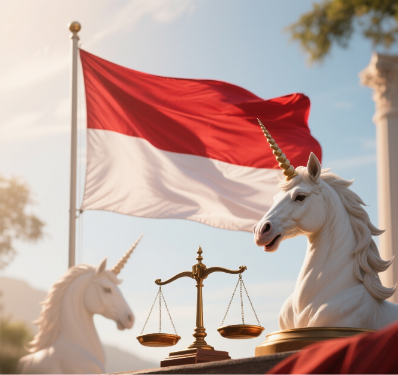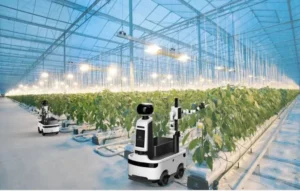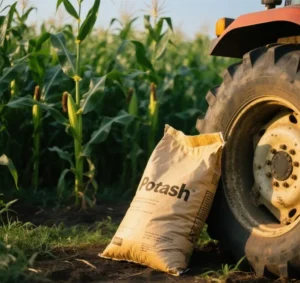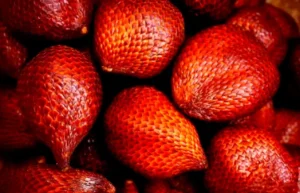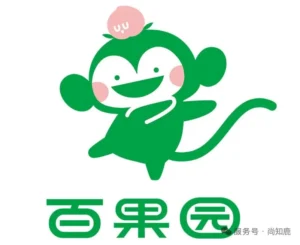As the fourth most populous country and a major agricultural economy, Indonesia allocates approximately 30% of its national budget to food production. Fertilizer policy is thus considered strategic economic infrastructure. Three realities dominate the market for international producers, traders, technology licensors, and financiers:
- All fertilizers—organic, biological, inorganic, or “soil enhancers”—must obtain a registration number from the Ministry of Agriculture (MoA) before they can be sold or distributed domestically.
- Compliance is based on a two-pillar system: (i) product certification against the Indonesian National Standard (SNI) or “Minimum Technical Requirements” (MTR), and (ii) import/production licenses for companies issued by relevant ministries.
- Since 2021, enforcement has become strict: every import shipment is physically sampled at the border, and products lacking SNI labels or valid registration numbers are destroyed or re-exported at the importer’s cost.
This article walks readers through the entire regulatory life cycle—pre-market, market access, post-market surveillance, and emerging policy trends—highlighting the practical steps that allow for smooth, low-risk entry into the Indonesian archipelago.
1. Legal architecture: why so many rules?
Fertilizer governance is scattered across half a dozen statutes, but it is administered centrally by the Ministry of Agriculture (MoA) under two flagship regulations:
- Regulation 43/Permentan/SR.140/8/2011 (inorganic).
- Regulation 70/Permentan/SR.140/10/2011 (organic, biological and soil conditioner fertilizers), as amended by Regulation 01/Permentan/SR.140/1/2019.
Both regulations have several features in common: registration validity of five years (with the possibility of a one-time five-year renewal), mandatory quality and effectiveness testing, Bahasa Indonesia labelling and criminal sanctions for non-compliance. However, Presidential Regulation 5/2021 on ‘Investment Risk-Based Licensing’ introduced an online single-submission system (OSS) that streamlines company licenses, yet did not eliminate the need for product-by-product registration at the MoA.
2. Product classification: getting the ‘label’ right first time
Indonesian law categorizes fertilizing materials into four groups, each of which has slightly different technical requirements.
- Inorganic fertilizer
Any substance manufactured chemically or physically that contains declared macro or micro nutrients. This includes straight N, P, K or blends, water-soluble, controlled-release and micronutrient packages, as well as “bio-enhanced” grades, provided the nutrient claim exceeds the microbe claim.
- Organic fertilizer:
A solid or liquid product containing ≥15% organic carbon (dry weight), derived from plant or animal waste, peat, palm oil mill effluent, etc. Examples include compost, humic granules and organic liquid concentrates.
- Biological fertiliser (Pupuk Hayati):
A live microbial preparation containing rhizobacteria, mycorrhizae, nitrogen fixers and phosphate solubilizers, with a cell count of at least 10⁷ cfu g⁻¹. No minimum organic C content is required; the quality criteria are viable count, contamination limit and shelf-life stability.
- Soil Enhancer/Soil Conditioner (Pembenah Tanah)
This is a material that is primarily advertised to improve the physical, chemical or biological properties of the soil rather than to supply nutrients directly. Examples include gypsum, bentonite, biochar and polyacrylamide flakes. If any nutrient claim appears on the packaging, the product is reclassified as an inorganic or organic fertilizer.
The correct classification determines which technical attachment (SNI or MTR table) applies; mis-declaration is a frequent reason for rejection at the border.
3. Registration Roadmap: From Foreign Laboratory to Indonesian Paddy Field
Step 1: Appoint an Indonesian legal entity
Only Indonesian PTs, cooperatives, or koperasi units can hold a registration number. Options:
- Set up a local subsidiary (100% foreign equity has been allowed since 2021).
- Appoint an independent distributor as “formula holder” under a written agreement. The MoA requires the contract to be stamped and translated. Intellectual property rights remain with the foreign supplier, but the local holder is legally liable for quality.
Step 2: Compile dossier
This is identical for organic and inorganic streams:
- Corporate deed, taxpayer ID (NPWP), business license (SIUP or NIB from OSS), domicile letter
- Trademark certificate or pending trademark (Indonesian Class 1).
- Draft label (see Section 4).
- Appointment letter for a foreign formulator.
- For SNI-certified goods, attach the SNI certificate from BSN. Otherwise, the product will follow the MTR track and must undergo local testing.
Step 3: Administrative validation (≤3 working days)
The MoA’s Center for Licensing and Investment (Pusat Perizinan dan Investasi) will check for completeness. Missing documents result in a Model-1 rejection letter, and there is no “silent approval.”
Step 4: Quality Testing (≤15 days)
Samples are drawn by an MoA-accredited lab (11 labs for inorganic samples and seven labs for organic/bio samples). Key thresholds are often missed by newcomers:
- Inorganic: Cd ≤ 100 ppm; Pb ≤ 500 ppm; As ≤ 100 ppm; Hg ≤ 10 ppm.
- Organic: C/N ratio of 12–25; moisture content of ≤30% (dry matter); pH of 4–8.5; and no presence of Salmonella or E. coli in 25 g.
- Biological: the viable count must be ≥80% of the declared figure at 30 days before expiry.
One free re-test is permitted; a second failure will result in the file being frozen for six months.
Step 5: Effectiveness testing (≤60 days, greenhouse or field)
This is conducted by one of the four institutes appointed by the MoA (e.g. IAARD centers). For inorganic fertilizer, the standard is a six-week hydroponic or pot test measuring agronomic efficiency. Organic/bio products require a 12-week field incubation on rice or maize. The pass benchmark is ≥90% of yield or soil-C improvement versus the positive control.
Step 6: Registration number issuance (within 14 days)
A decision letter is signed by the Director-General of Infrastructure & Facilities on behalf of the Minister. Format: “Reg. No. …/SR.140/M/11/2024” (the last digits represent the year). This number is product-specific and cannot be transferred except in the event of a corporate merger (notification to the MoA must be made within 30 days).
Timeline reality check
The MoA service standard is 76 working days, but experienced agents can achieve 4–5 months if there are no test failures. Parallel import permits (see Section 5) can be filed once testing begins, thus avoiding any additional delays.
4. Labelling and packaging – the ‘Bahasa Indonesia’ rule
Article 7 of both the organic and inorganic regulations lists nine compulsory items that must be written in the Indonesian language. Stickers are accepted, but they must be waterproof and indelible:
- Trade name (no superlative adjectives such as ‘super’, ‘mega’ or ‘hyper’ permitted).
- Registration number.
- Guaranteed nutrient, organic carbon and microbial count.
- Net weight/volume (metric).
- Production date (DD/MM/YYYY).
- Shelf life/circulation period.
- The producer’s and importer’s names and full Indonesian addresses.
- Instructions for use (must include a dosage table for each crop).
- The batch code must be linked to the CoA.
Symbols such as ‘NPK 15-15-15’ are permitted, but the nutrient ratio must match the registered formula within ±5%. Multilingual text is permitted, provided that the Indonesian version is no smaller or less prominent.
Bulk shipments: 50 kg bags and 1 t tote bags must display the woven-in or laminated SNI logo and SPPT-SNI code. Loose bulk vessels require an accompanying SPPT-SNI certificate to be presented to port quarantine.
5. Import and Export Logistics: Quarantine, Customs, and SNI Enforcement
Pre-shipment
The importer lodges a “Pemberitahuan Impor” (Import Notification) through the INSW portal and attaches the registration number, certificate of analysis (CoA) from the origin laboratory, and phytosanitary certificate for organic material (if there is more than 5% plant debris).
Border Control
The Quarantine Agency (Barantan) samples every lot. The failure rate averaged 7% from 2019 to 2023. Common reasons for rejection include moisture above specifications, torn bags, missing SNI hologram, expired registration, or misclassified HS code (fertilizer vs. feed).
Post-entry
The importer must keep one composite sample (500 g) for at least six months, and MoA inspectors may re-test without notice. Transshipment to other ASEAN ports is not allowed before customs clearance.
Export
No export license is required, but exporters often request a “Free Sale Certificate” from the MoA to satisfy the destination country. The MoA issues the certificate within three days if the registration is clean.
6. Post-Market Surveillance — When the Inspector Visits Your Warehouse
Competency has shifted from the central to the provincial level under Law 23/2014. Provincial Food & Crop Services conduct two-tier surveillance:
- Technical: sampling, label checking, and warehouse GMP.
- Administrative: traceability documents and a six-month procurement report (Attachment XVII).
Fertilizer supervisors (PPPs) can suspend circulation for 30 days if there is strong evidence of adulteration; the Ministry of Agriculture (MoA) in Jakarta issues the final sanction (revocation). Under Consumer Protection Law 8/1999, courts have imposed criminal fines of up to IDR 5 billion (approximately USD 320,000) for falsified nutrient claims.
7. Fees, Costs & Renewal – Budgeting for Five Years
| Cost component (USD, indicative) | Inorganic | Organic/Bio |
| MoA non-tax state revenue | 220 | 220 |
| Quality test (local lab) | 700–1 200 | 900–1 500 |
| Effectiveness test | 1 500 | 2 000–3 000 |
| Legal/agent retainer | 3 000 | 3 000 |
| Total typical | ≈ 5 500 | ≈ 6 500 |
Re-registration in year five costs approximately 60% of the initial cost if there is no formula change. Odd-numbered renewals require only a quality re-test, while even-numbered ones require a quality and effectiveness re-test.
8. Special Formulas, Blends, and Bio-Stimulants — The Grey Zones
- Custom blends ordered by plantation groups can bypass full registration (Art. 24 for inorganic and Art. 31 for organic), but they must be reported to the Directorate of Fertilizer and Pesticide before use. They cannot be sold to the public.
- Fortified products (inorganic + microbes, amino acids, or humic substances) are classified by the primary claim. If the nutrient and microbial claims are co-dominant, the MoA will demand dual testing, which often doubles the cost and time. – Plant bio-stimulants (seaweed extracts, protein hydrolysates) with no N-P-K guarantee currently fall under the “soil enhancer” class. However, a dedicated bio-stimulant rule is expected in 2025, and transitional arrangements will grandfather existing numbers.
- Plant bio-stimulants (e.g., seaweed extracts and protein hydrolysates) with no N-P-K guarantee currently fall under the “soil enhancer” class. However, a dedicated bio-stimulant rule is expected in 2025 (draft completed in 2022), and transitional arrangements will grandfather in existing numbers.
9. Sustainability and circular economy push: where policy is heading
Indonesia’s 2020–2024 Medium-Term Plan aims to reduce chemical fertilizer use by 30% by:
- Mandatory 200 kg ha⁻¹ of organic carbon input for rice production from 2025 onwards (Government Regulation No. 46/2021).
- A carbon-credit roadmap for biochar and compost plants (Ministry of Environment and Forestry, 2023).
- Expansion of B30 biodiesel → 12 Mt per year of palm-oil mill effluent available for fortified organic fertilizer.
State-owned PT Pupuk Indonesia and regional governments are courting international suppliers who can offer proven low-emission or carbon-negative products (through LCA data verified under ISO 14067) for joint-venture status.
10. Practical checklist: what to do before you ship
- Verify the HS code (3102–3105 for inorganic substances and 3101 for organic substances).
2.Confirm the product class with the Ministry of Agriculture (e-mail: registrasi.pupuk@pertanian.go.id) to avoid re-testing.
- Appoint a local registration holder and secure a notarized agreement.
- Prepare a bilingual label and pre-clear the trademark in Indonesia. 5.
- Book an accredited laboratory early, as demand spikes from March to May ahead of the planting season.
- Keep a record of every batch’s certificate of analysis (CoA); digital copies must be available within 24 hours of an inspector’s request.
- File a six-monthly procurement report, even if the import volume is zero, to avoid automatic expiry.
- Track the renewal calendar, as the MoA does not send any automatic reminders.
Conclusion
Indonesia’s fertilizer market is growing at a CAGR of 6% and remains undersupplied in the specialty segments of water-soluble, micronutrient and biological fertilizers. However, there are tangible regulatory hurdles: achieving full compliance can take 5–7 months and cost around USD 6k per SKU. Engaging early with testing labs, local partners and the Ministry of Agriculture (MoA) licensing center is the simplest way to avoid border seizures, shipment destruction or negative headlines about license revocation. Indonesia rewards stakeholders who invest in understanding the system with access to 180 million farmers and an increasingly green-conscious government prepared to pay a premium for technologies that support food security and carbon sinks.


